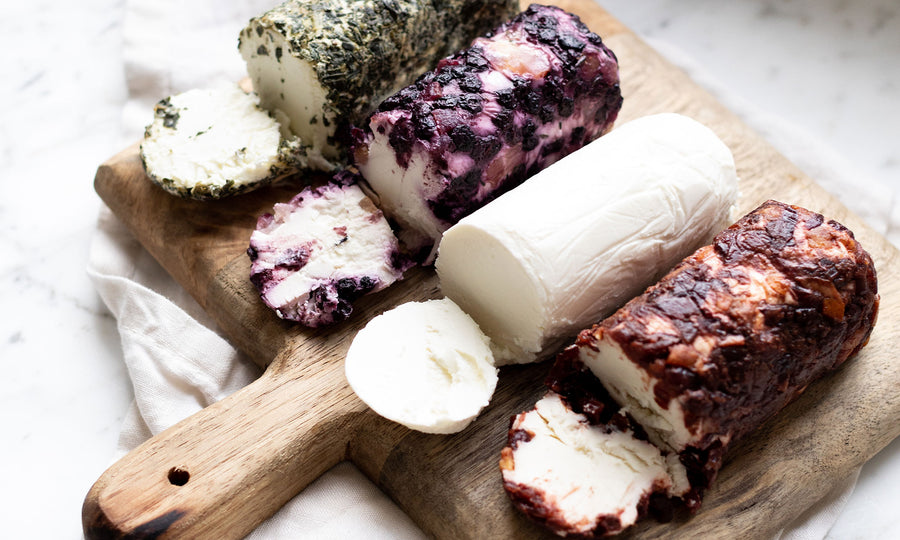
For the Vermont Creamery Research & Development team, fermentation isn’t just a process to make world class cultured butters and cheeses – it’s a hobby and passion of ours. In fact, we can talk about it all day long, so, to that end, we rounded up our top fermented food fun facts to share with you – a healthy mix of science, history, and completely random trivia.
Here we go!
Celestial Snacking
“If a Korean goes to space, kimchi must go there, too.” So says Kim Sung Soo, a Korean Food Research Institute scientist, who explained to the New York Times in 2008 that when South Korea’s first astronaut launched into space, scientists would be launching a new way to make the tasty cultural treat.
Korean scientists created ‘space kimchi,’ reducing the strong smell by almost half, and killing bacteria with radiation. Why was this important? Well, as one scientist warned, “Imagine if a bag of kimchi starts fermenting and bubbling out of control and bursts all over the sensitive equipment of the spaceship!”
That’s one small step for man, one giant leap for fermented food lovers everywhere.
Kombucha Couture
If you’ve ever fermented your own kombucha (and who hasn’t, right?), you might recognize SCOBY (short for Symbiotic Culture of Bacteria and Yeast) as the brownish blob responsible for giving your tea it’s tangy vinegar-like taste. But did you know that SCOBY can be made into sustainable clothing? Yup, grow SCOBY in your bathtub to create one very large mass – dry it out, and you can create a leathery material to make your own statement piece. Just avoid wearing it in the rain.
Go-Go Grape
Do you know how easy it is to make wine? Take some grapes, mash them into a jar, and add a little heat. You can find as many as 50,000 natural yeast particles on a single wine grape.
Ok, so you probably didn’t make a prize pinot, but you made wine nonetheless. The use of wild ferments, in lieu of industrial yeasts, are gaining popularity in the winemaking world. They often produce complex flavor profiles and interesting textures. Studies show that all vineyards have a unique microbial fingerprint, so find yours and dig-in!
Sourdough Starters
America’s appetite for sourdough bread dates back to the days of the California gold rush when miners flocked to the city with their beloved bread starters. On cold nights, the miners would cuddle up with them to keep the yeasts and bacteria alive.
San Franciscans love their beloved bread so much that the 49ers mascot is nicknamed ‘Sourdough Sam.’
Food of the gods
Human’s infatuation with good cheese dates back centuries and is often documented by the Ancient Greeks in some of civilization’s most famous texts.
In Book Five of the Illad, Paieon, physician to the gods, calms god-of-war Ares with the rennet coagulation of milk by ficin – a protease found in the latex of fig trees. “As when fig-juice is added to white milk and rapidly coagulates the liquid, and the milk curdles as it is stirred, so speedy was the healing of raging Ares.”
This isn’t the only ode to cheesemaking in ancient Greek literature; in Book Nine of The Odyssey, Homer mentions Cyclops making milk cheese out of sheep’s milk.
Lactic Luxury
Crema d’or, is the world’s most expensive yogurt, priced around $50 a jar!
Made in Hokkaido, Japan, this milk and honey yogurt has a rich and creamy texture selected from cows chosen from the local cattle farm. Talk about eating local! The yogurt is packaged in a fancy gift box and wrapped in a bow. Now that’s what we call luxury.
Fishin’ for Flavor
If you’ve ever eaten Japanese food, chances are that you’ve tried katsobushi, a dried fermented fish product that is a foundational flavor in much of Japanese cuisine. The shaved fish starts as fileted slipjack tuna, simmered and smeared with fish paste. Next, the fish is sprayed with mold and fermented for about six months. It is shaved into paper thin pieces and added to an array of Japanese dishes, including dashi stock which is used in miso soup.
Shark Snack
Fermented shark, or Hakarl, is a famous Icelandic delicacy.
Containing high levels of uric acid and trimethylamine, evolution designed the flesh of the Greenland shark specifically to protect is from the chilly northern Arctic waters. The flesh is toxic to humans in it’s pure form, but the shark is made edible by burying the body with stones, sand and gravel and allowing it to ferment for up to twelve weeks, at which point, the fermented meat is cut into strips and dried for several months.
The late Anthony Bourdain sampled hakarl on an episode of No Reservations. He ranked it as one of the worst food-related experiences of his life. When Time Magazine asked what foods he would never try again, he listed hakarl, along with Namibian warthog rectum. Having had the opportunity to sample this delicacy during a trip to Iceland, my recommendation is to chase it with a shot of Brennevin, a local Viking liquor, hold your nose, and hope for the best.




